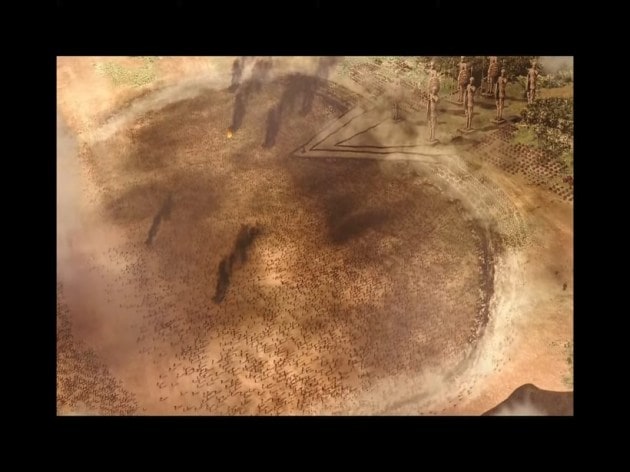7 Years of Baahubali The Beginning: Five best sequences from the film
As Baahubali: The Beginning turns seven years, here is a look at five stunning sequences from the first part of one of the most important feats of visual storytelling to be made in the Indian cinematic history.
July 11, 2022 17:23 IST 1 / 5
1 / 5The opening sequences of Baahubali: The Beginning, had Ramya Krishnan as Queen Shivagami - the role of a lifetime. In one of the most stunning sequences of the film (perhaps a homage to The Lion King), she in full Rafiki style proclaims the child in her hand as the future king of Mahismati. But an even more stunning shot follows when trying to escape unscathed with the baby, she falls into the river herself but her hand rises above the waters - with the wailing baby still alive. This singular moment encapsulates all the themes of fate, sacrifice and loss that the film eventually comes to embody. (Photo: Movie Still)
 2 / 5
2 / 5This stunning sequence is not only remembered for its jaw dropping visuals but also for the role it plays in foregrounding the character of Mahendra Baahubali aka Shivudu. To convince his mother against climbing the mountain and praying to the God for 101 days, Shivudu singlehandedly hoists the Shiva lingam with his hands, carries it on his shoulders and places it under the waterfall itself - showing that devotion, daring and loyalty are the foremost characteristics of his personality. (Photo: Movie Still)
 3 / 5
3 / 5This scene occurs when Shivudu arrives in Mahismati for the first time. Unaware of his own identity, he helps raise a giant statue of Bhallaladeva - a task at which the labourers were clearly struggling. In surreptitiously helping them erect the statue, in this magnificently shot sequence, the subversive potential of the narrative is fully achieved. Although Mahendra helps erect a statue for the tyrant today, over the curse of the narrative it will be he who shall bring him down to his knees. (Photo: Movie Still)
 4 / 5
4 / 5The battle against the Kalakeyas is what establishes Amarendra as a more loved and able administrator and warrior than his power-mongering cousin Bhallaladeva. Hence, Rajamouli reserves some of his most imaginative sequences for this bit of the film. From using pieces of cloth as falls of flame on the enemy battalions to awesome battle formations - this was by far one of the best sequences of the film. (Photo: Movie Still)
 5 / 5
5 / 5For the two years before the sequel was released, with a long awaited explanation, an entire nation repeated only one question like a chant - Katappa ne Baahubali ko kyun mara? In a stunning confession, Katappa revealed himself as the traitor who had killed Amarendra Baahubali. The sequence which was framed against the rampage of the battlefield had the silhouette of the murderous act playout against golden flames in the background. This was visual poetry the genre of war-epics had never seen before. (Photo: Movie Still)











